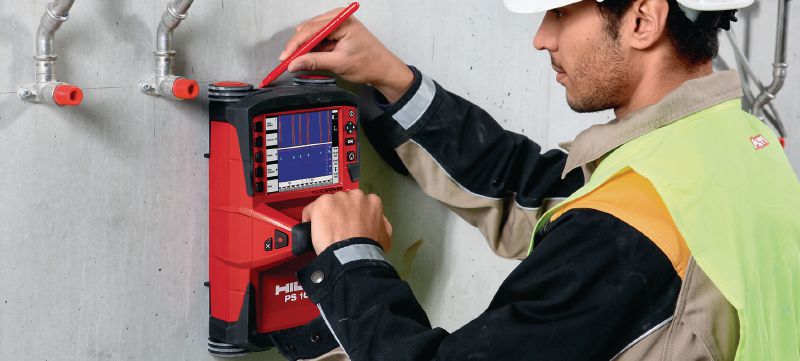Enhancing Project Preparation and Execution With Advanced Concrete Scanning Strategies
In the world of project planning and execution, accuracy and foresight are crucial aspects that can make the difference between success and troubles. Advanced concrete scanning methods have actually emerged as a sophisticated device set to elevate the criteria of project management within the building and construction industry.
Advantages of Advanced Concrete Scanning Strategies
Improved Precision in Job Assessments
Enhancing project evaluations with advanced concrete scanning methods dramatically improves the precision and reliability of construction evaluations. By utilizing sophisticated scanning technologies such as ground-penetrating radar (GPR) and 3D imaging, task groups can currently acquire thorough insights into the condition of concrete frameworks, recognizing possible problems or weak points that might not show up to the nude eye. This enhanced level of accuracy in task assessments enables construction experts to make even more enlightened choices relating to repair work and maintenance techniques, resulting in enhanced overall task end results.
Moreover, the raised accuracy in job evaluations accomplished through advanced concrete scanning techniques helps in minimizing the danger of unanticipated problems during the construction phase. By proactively detecting hidden anomalies within concrete structures, such as rebar deterioration or voids, project teams can address these problems early, staying clear of pricey hold-ups and rework later in the job lifecycle. Eventually, the enhanced precision in project evaluations promoted by advanced concrete scanning methods adds to higher performance, cost-effectiveness, and quality in building and construction jobs.
Early Identification of Structural Obstacles
Early detection of structural challenges plays a critical function in ensuring the stability and safety of concrete frameworks throughout the building and construction procedure. Determining potential problems at a very early stage permits for timely intervention, preventing costly rework, routine hold-ups, and safety risks. Advanced concrete scanning strategies, such as ground-penetrating radar (GPR) and 3D imaging, allow project groups to discover covert issues, spaces, reinforcement layout inconsistencies, and various other abnormalities that might compromise the structure's security.
By implementing these methods throughout the planning and implementation stages, building and construction specialists can proactively attend to structural difficulties before they escalate right into major problems. For example, detecting inadequate concrete cover imp source over reinforcement bars early can stop deterioration and structural weakening in the future - RainierGPR Service Areas. Moreover, determining variants in concrete thickness or thickness can help maximize material use and make sure uniform strength homes throughout the structure
Ultimately, early recognition of architectural obstacles through innovative concrete scanning not just boosts the overall quality and resilience of the building however additionally contributes to find out this here a more secure constructed atmosphere for customers and passengers.
Boosted Precaution in Building
The implementation of robust safety methods is necessary in the building and construction industry to alleviate threats and protect the well-being of stakeholders and employees. Building and construction websites are inherently harmful environments, with possible threats varying from falls and equipment malfunctions to architectural failings. To boost security measures, building business are increasingly adopting technical innovations such as wearable gadgets that monitor employees' important signs and find possible health and wellness concerns in real-time. In addition, using drones for site surveillance enables regular safety examinations without placing personnel in injury's means. Safety training programs have additionally developed to include virtual fact simulations that give hands-on experience in dealing with emergency scenarios. Additionally, the combination of expert system in security administration systems makes it possible for positive identification of possible threats, permitting timely interventions. By prioritizing safety and security via the incorporation of innovative modern technologies and detailed training programs, construction tasks can considerably decrease accidents and develop a safe and secure workplace for all included - RainierGPR Service Areas.
Streamlining Task Monitoring Processes
To optimize operational efficiency and make certain project success in the construction sector, a focus on streamlining project management processes is vital. By applying reliable task monitoring processes, construction jobs can lessen delays, reduce costs, and boost overall efficiency.

Verdict
To conclude, the utilization of innovative concrete scanning strategies offers various benefits for project planning and execution. These strategies offer enhanced accuracy in job assessments, very early recognition of architectural obstacles, boosted safety and security actions in construction, and streamlined job administration processes. Incorporating these techniques into task process can ultimately cause much more effective and efficient results in building tasks.
Inevitably, the enhanced accuracy in project analyses facilitated by sophisticated concrete scanning strategies adds to better effectiveness, cost-effectiveness, and quality in construction projects. RainierGPR Service Areas.
To maximize operational effectiveness and ensure project success in the building industry, an emphasis on simplifying task management procedures is necessary. By applying efficient project administration processes, building and construction tasks can decrease delays, decrease costs, and improve total performance. By simplifying task management processes through innovation assimilation, clear communication, and data-driven strategies, building and construction tasks can accomplish higher performance, cost-effectiveness, and effective results.
These techniques provide enhanced precision in job analyses, early recognition of architectural obstacles, boosted security procedures in building, and structured task management procedures.